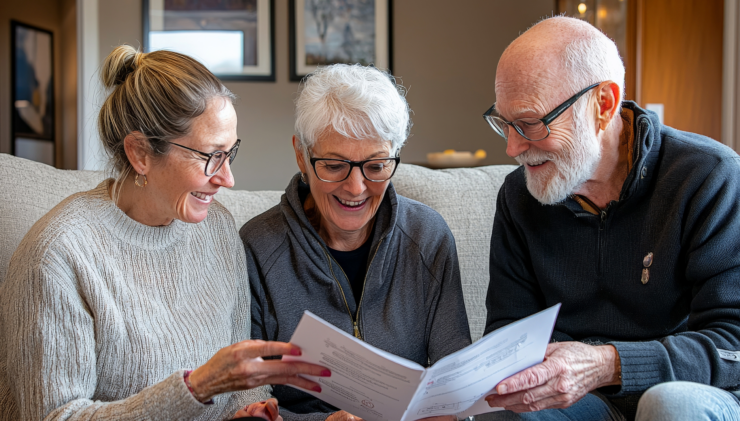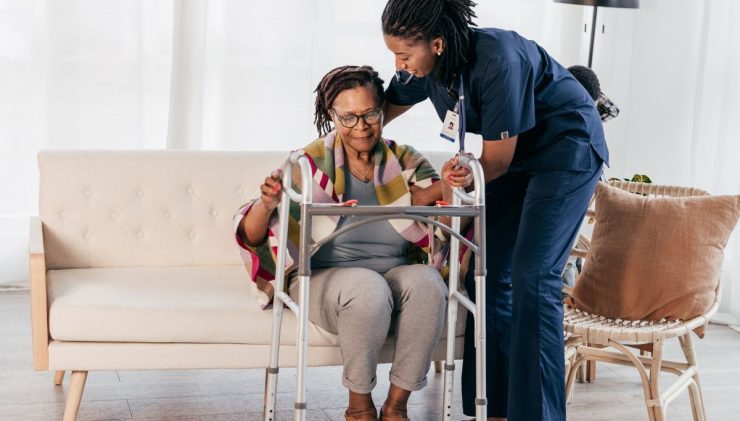 Why Home Care Agencies Need a Safety Plan
Why Home Care Agencies Need a Safety PlanDemand for in-home care is increasing. While in-home care is beneficial in many ways, the unpredictability of home settings can make it more difficult for agencies to deliver care while maintaining safety. Home risk assessments minimize such risks.
Seniors Want to Age in Place
With the large Baby Boomer generation entering retirement, the population is aging fast. According to the U.S. Census Bureau, all Baby Boomers will be 65 or older by 2023. HHS says more than 10,000 people turn 65 every single day.
As a result, demand for senior care is growing. The demand for in-home care is particularly high, as many older adults don’t want to move into assisted living communities or nursing homes. In fact, the National Poll of Healthy Aging from the University of Michigan’s Institute for Healthcare Policy and Innovation found that 88% of adults between the ages of 50 and 80 say it is important for them to remain in their homes for as long as possible.
This is understandable. Most people love their homes. They may have fond memories they don’t want to leave behind, friendships with their neighbors, or gardens they’re proud of. People are also comfortable in their homes.
Unfortunately, the average home is also full of hazards.
Home Risk Assessments Promote Safety and Reduce Liability
Caregivers are responsible for keeping their clients safe and healthy. If an accident occurs, the client may suffer a severe injury. In some cases, the caregiver may even be accused of negligence and face a lawsuit.
A home risk assessment mitigates the risk of such an occurrence. Home care agencies should carry out home risk assessments as part of the initial consultation when they are discussing the client’s care needs. When conducting a home risk assessment:
- Assess the home. It’s important to walk through the entire home, including outside areas, such as yards and patios.
- Note any hazards. Use a checklist to ensure you don’t miss anything and to create a record of the assessment. Take notes and check off areas as you go through the home.
- Discuss hazards and remedies. Review the hazards and discuss necessary the safety measures to mitigate risks. For example, you may suggest tightening a handrail, adding a non-slip mat, replacing a lightbulb, or changing a torn rug.
- Determine how the home environment will impact care. Consider the level of care the client needs as well as any known issues (such as wandering or health problems) and whether the home currently provides a safe environment.
What Hazards Should You Look For?
The assessment should be as thorough as possible. Include:
- Every Room. Kitchens and bathrooms tend to be particularly hazardous, but the assessment should also cover the living room, dining room, bedrooms, laundry rooms, hallways, the basement, and all other rooms in the house.
- The Exterior. Examine the front yard, backyard, and any decks or patios.
- The Entrances and Exits. Look for things like tripping hazards and blocked exits. If the patient is prone to wandering, consider whether there’s anything you could do to prevent wandering (such as installing an alarm) and what hazards the client might encounter while wandering.
- Fall Hazards. Falls are a common cause of injury among older adults. Look for any hazards that could cause the client to slip or trip, such as torn rugs, broken steps, and clutter or cords in the walkways. Also consider whether wet floors may pose a problem due to weather, pet accidents, or spills.
- Check handrails to make sure they are not loose. Also consider whether additional handrails are necessary, especially on stairs or in the bathroom.
- Poor lighting also contributes to falls. Look for bulbs that need replacing and areas that could benefit from an additional light source.
- Fire and Heat Hazards. Most fire and heat hazards are in the kitchen. However, portable heaters pose a serious risk in any room.
- Electrical Hazards. Check for frayed wires, overloaded outlets, and other electric hazards.
- The home should have working smoke and carbon dioxide detectors.
- Each home is unique. Note any other issues you identify.
Consider the Caregiver’s Safety
When caregivers go into other people’s homes, they may encounter hazards that threaten their own health and safety.
- Are there potentially-dangerous pets?
- Could any people pose a danger? This could be the client or someone else in the household.
- Are there any other potential threats, such as the safety of the neighborhood?
Home risk assessments help keep clients and caregivers safe and healthy. Since risks change over time, caregivers should always be on the lookout for new hazards.
Of course, it’s also important to carry adequate insurance tailored to meet the unique needs of home care agencies. Heffernan Insurance Brokers offers the customized coverage you need. Learn more.



